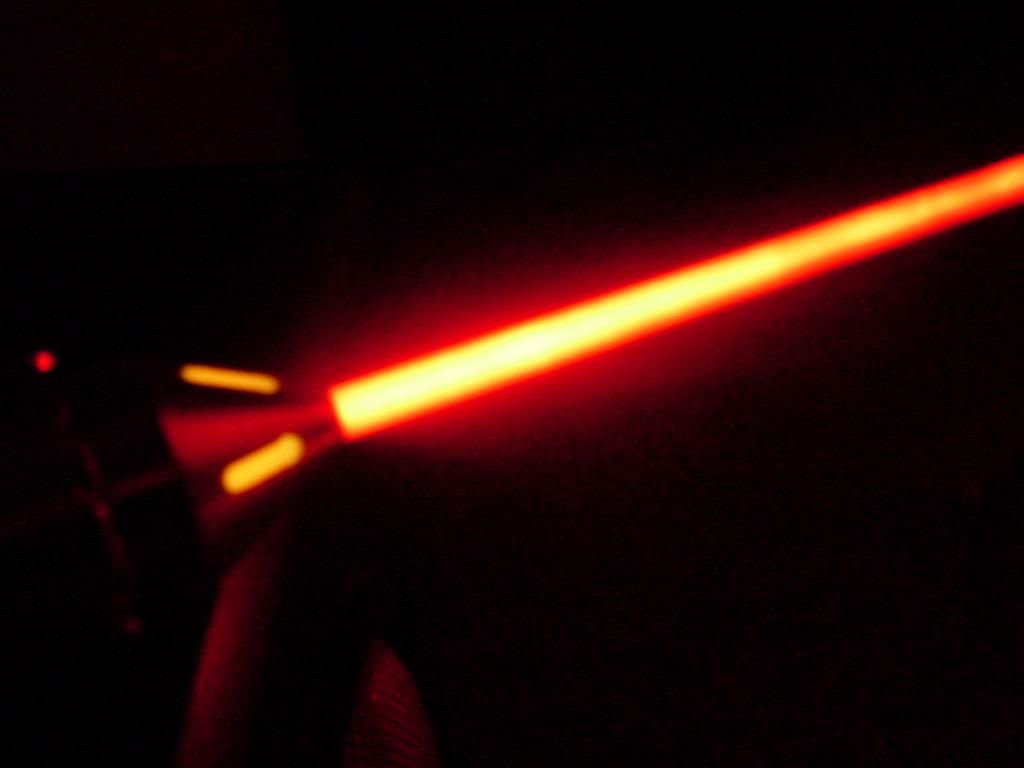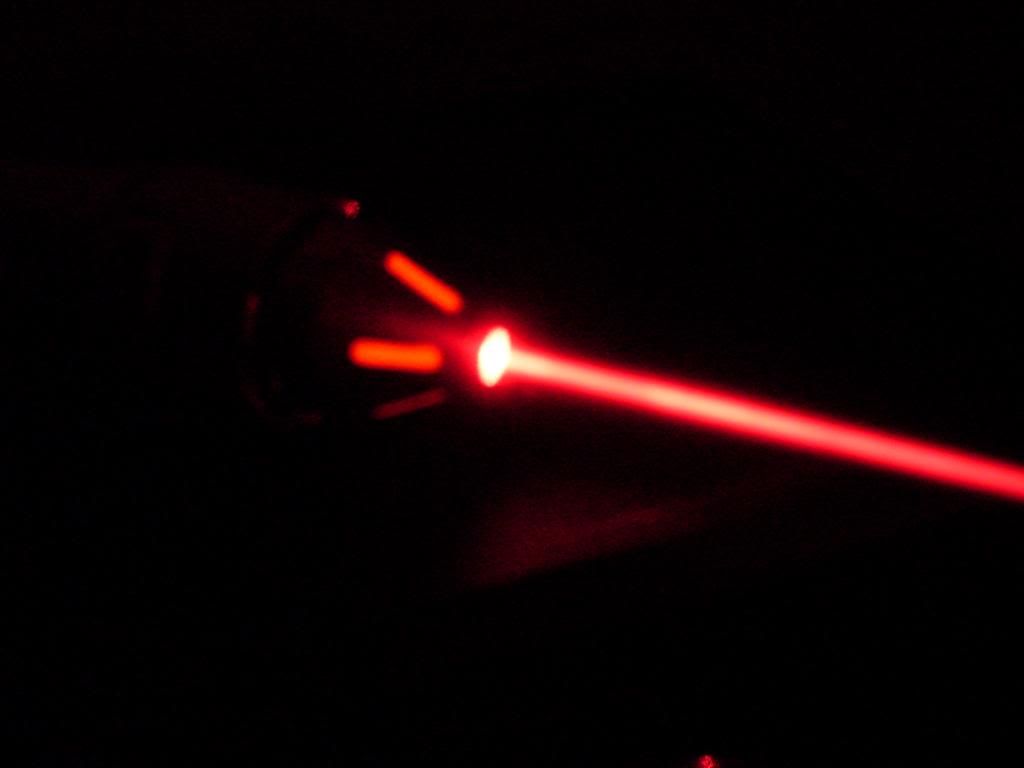- Joined
- Mar 10, 2013
- Messages
- 2,917
- Points
- 113
Ok, so first off I can't quite decide where to put this, as it could fit in a couple topics, so feel free to move it.
Just some pics that are my take on comparison between yellows, with some orange and red in the mix to help it along for reference. These are not altered, and are natural shots, with the camera's compensations mostly turned off, to give better color. comparing them with what I see here in RL its as close as I've ever seen to real life. take a look! :tinfoil:
Mainly this is the comparison between the two yellow-orange wavelengths, as well as 611.9nm (red-orange) from a HeNe, and 632.8nm (kind of a pinkish red orange) also from a HeNe. all powers are less than 5mW and are CW, TEM00 and quite stable. The 589 is from a 5mW short term intensity stablized PGL-C, as well as good quality stablized HeNes from Melles Griot for the others.
First subject! This is 588.6nm that we all love and hallow as 'yellow' it does technically have some orange in it, but only a bit. followed by 594.1nm which is an orange yellow, kind of a amber color on the right. this pic is a bit over exposed, but its fairly good at showing the color difference.

I also apologize in advance for images getting fuzzy, this is a combination of taking the shots in the dark, to eliminate color queues as well as resizing the images to be a bit more friendly side by side. These are shots into a frosted lamp bulb on the ceiling, and what makes these so great is tthat the shape allows me to show the intensity you'd normally see in the center, while comparing it to the real color above it as it diffuses into the glass, giving you two clean colors, seeing the huge difference it makes on your eye.
The order is 588.6, then 594.1, then to 611.9, and 632.8 last.
This should allow for an easy comparison of the colors.




I also did some shots into my storm glass, which has similar effects. once again, we'll start at 588.6nm, and then move to longer wavelengths, red-shifting all the way back to 632.8. These really give the lasers a chance to shine and dazzle, as well as show off. note the diffusion onto the floor carefully as well as the color of the tube! (though sadly the 611.9 is a bit overly blurry from free-handing my pics) I also apologize that I couldn't effectively put these side by side without making them look like crap.
(though sadly the 611.9 is a bit overly blurry from free-handing my pics) I also apologize that I couldn't effectively put these side by side without making them look like crap.




I see alot of comments and questions on this, so I thought this'd be a fun thing to post and really show off the wavelengths for what they really are, and try to clear up some of the misconceptions around a few of them.
Cheers! :beer:
Just some pics that are my take on comparison between yellows, with some orange and red in the mix to help it along for reference. These are not altered, and are natural shots, with the camera's compensations mostly turned off, to give better color. comparing them with what I see here in RL its as close as I've ever seen to real life. take a look! :tinfoil:
Mainly this is the comparison between the two yellow-orange wavelengths, as well as 611.9nm (red-orange) from a HeNe, and 632.8nm (kind of a pinkish red orange) also from a HeNe. all powers are less than 5mW and are CW, TEM00 and quite stable. The 589 is from a 5mW short term intensity stablized PGL-C, as well as good quality stablized HeNes from Melles Griot for the others.
First subject! This is 588.6nm that we all love and hallow as 'yellow' it does technically have some orange in it, but only a bit. followed by 594.1nm which is an orange yellow, kind of a amber color on the right. this pic is a bit over exposed, but its fairly good at showing the color difference.

I also apologize in advance for images getting fuzzy, this is a combination of taking the shots in the dark, to eliminate color queues as well as resizing the images to be a bit more friendly side by side. These are shots into a frosted lamp bulb on the ceiling, and what makes these so great is tthat the shape allows me to show the intensity you'd normally see in the center, while comparing it to the real color above it as it diffuses into the glass, giving you two clean colors, seeing the huge difference it makes on your eye.
The order is 588.6, then 594.1, then to 611.9, and 632.8 last.
This should allow for an easy comparison of the colors.




I also did some shots into my storm glass, which has similar effects. once again, we'll start at 588.6nm, and then move to longer wavelengths, red-shifting all the way back to 632.8. These really give the lasers a chance to shine and dazzle, as well as show off. note the diffusion onto the floor carefully as well as the color of the tube!




I see alot of comments and questions on this, so I thought this'd be a fun thing to post and really show off the wavelengths for what they really are, and try to clear up some of the misconceptions around a few of them.
Cheers! :beer:
Last edited:








